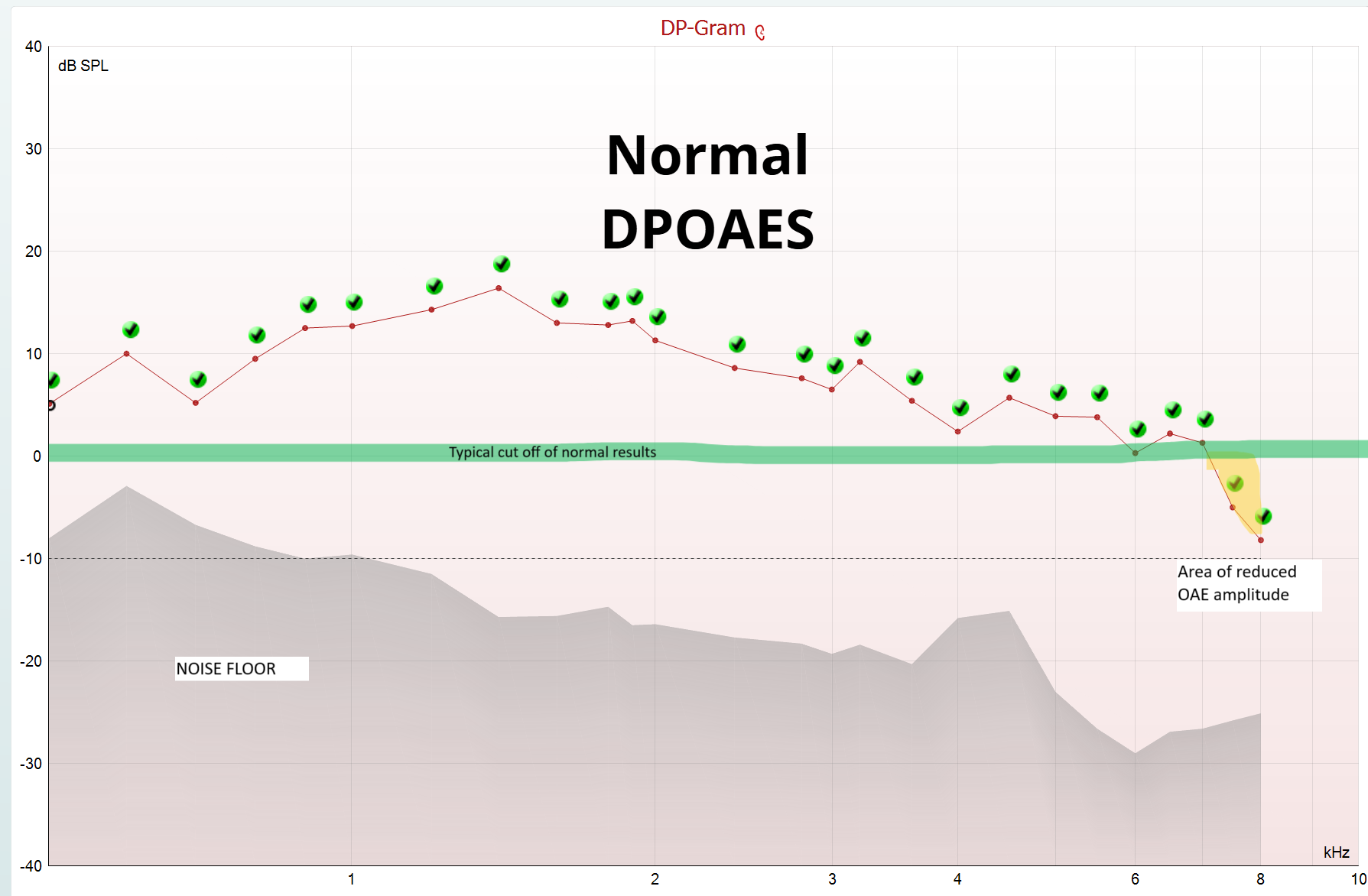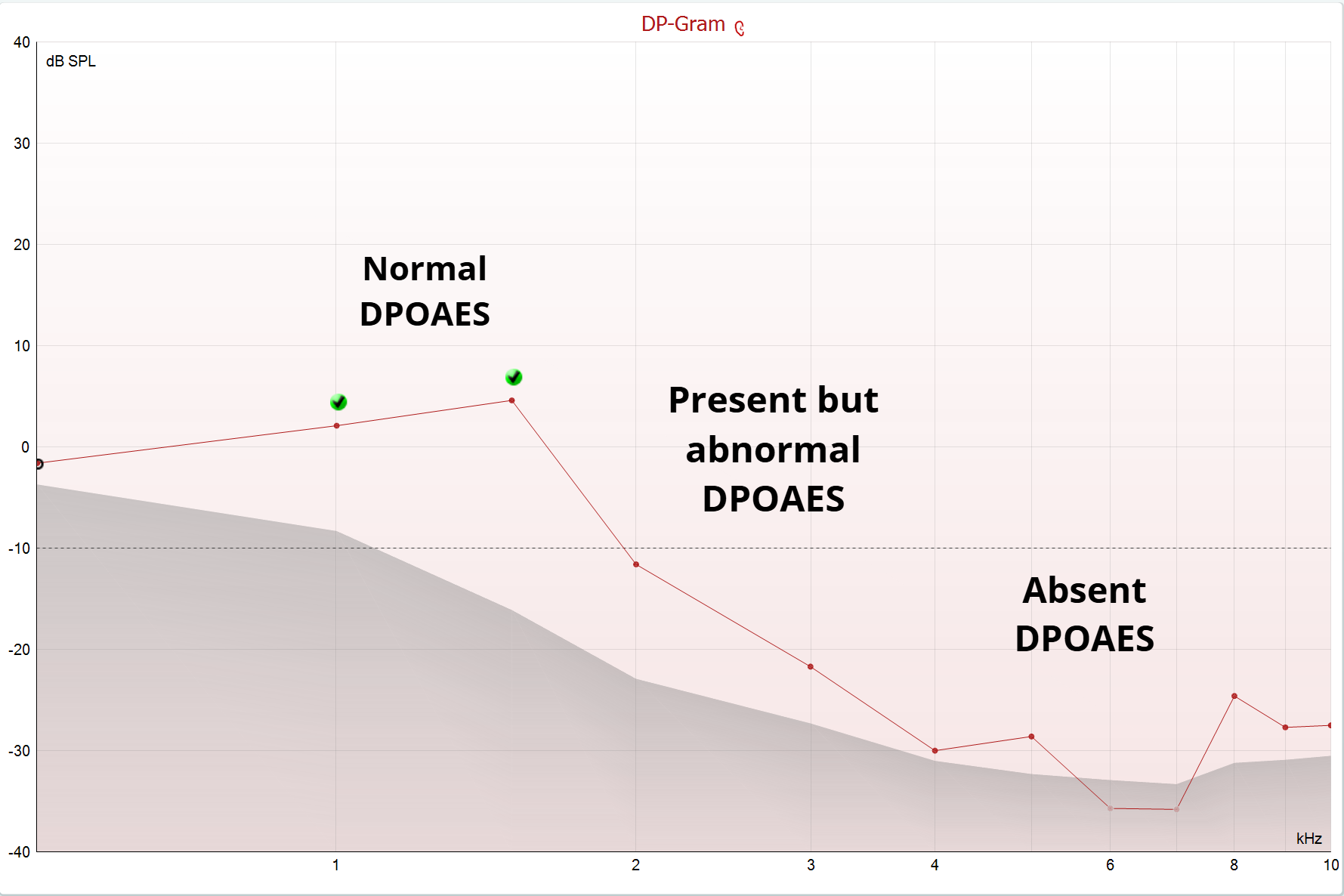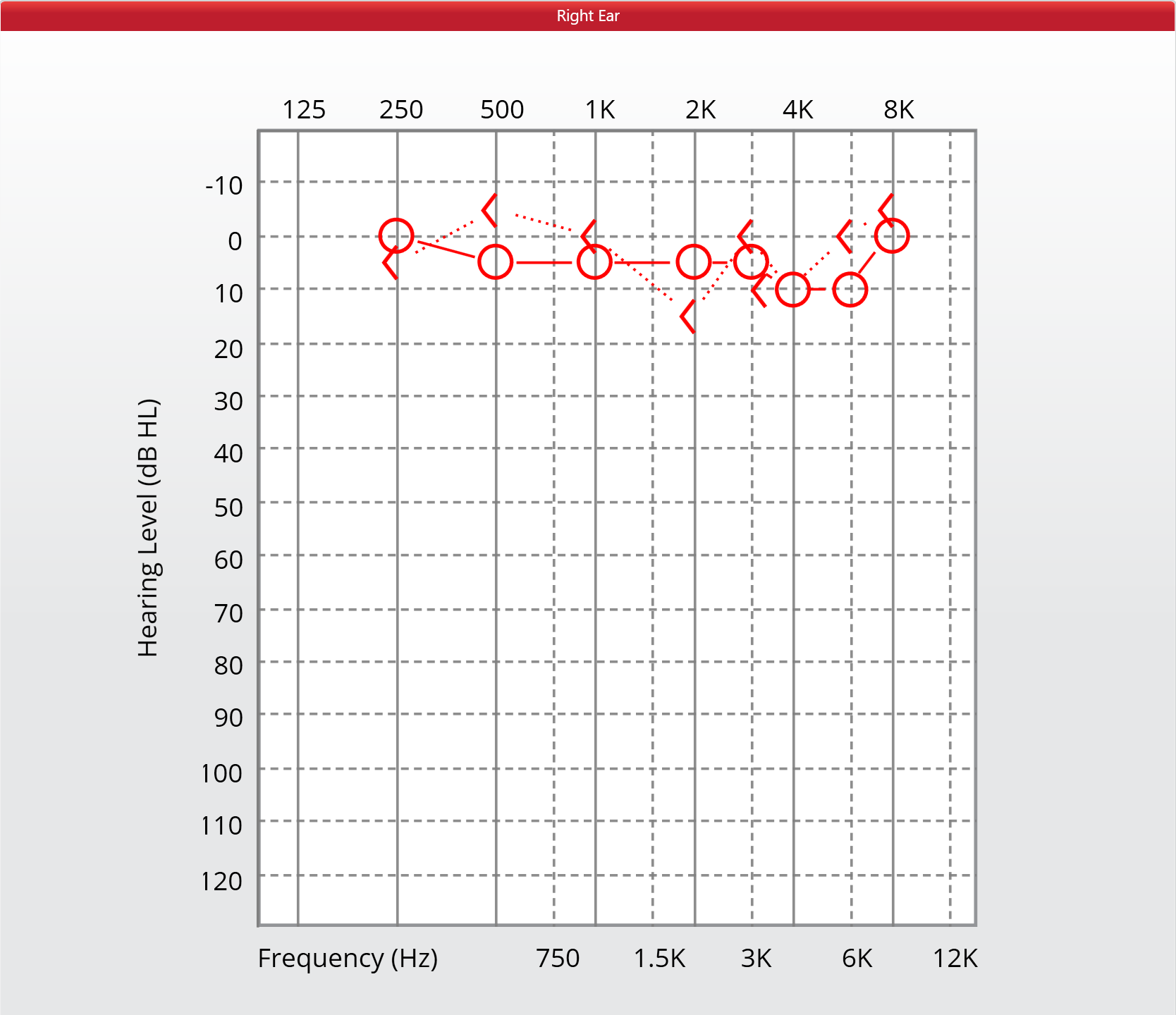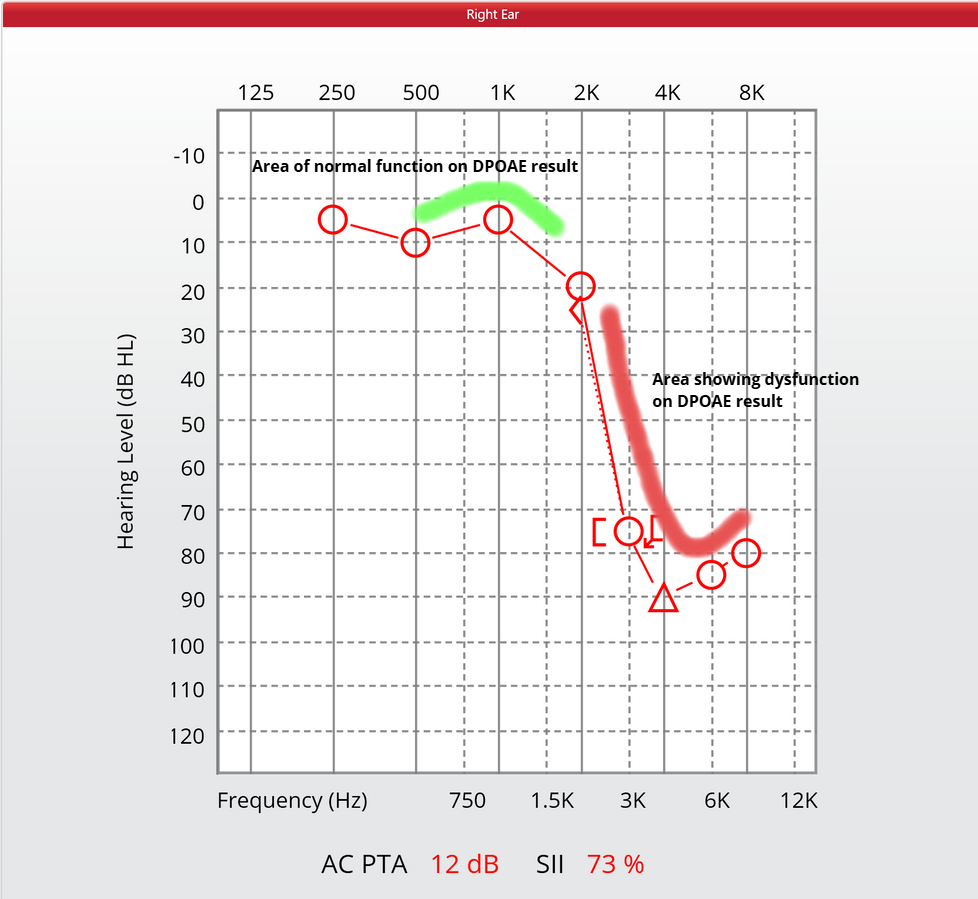Otoacoustic Emissions
An objective test of cochlear function.
DPOAEs or Otoacoustic emissions
OAES are a very powerful and yet seldomly used clinical tool in adult audiology.. OAES tell audiologists little about the degree of hearing loss, but are excellent at identifying which frequencies are likely more affected than others, and they are excellent at identifying normal cochlear function. Otoacoustic emissions (OAEs) are sounds measured in the external ear canal that are associated with mechanical activity of the outer hair cells in response to sound entering the cochlea.
There are two types of OAE used in clinical audiology.
- Distortion Product Otoacoustic Emissions (DPOAE)
- Transient Evoked Otoacoustic Emissions (TEOAE)
In our clinic, we use DPOAE rather than TEOAE, however TEOAE is still widely used in audiology. Alberta Health runs a newborn hearing screening program and uses an automated TEOAE system to provide a Pass/Refer result for neonates as a basic screen of audiological function. Explaining the fundamental differences between TEOAE and DPOAE is beyond the scope of this guide, but more can be read
here.
We feel that OAES are valuable for:
- Cross checking other test results.
- For example, a dysfunctional cochlea will often have abnormal OAES, often in a pattern that mirrors the frequency ranges being affected by measurable hearing loss.
Ototoxicity screenings to that may occur with certain therapeutics, such as chemotherapy or aminoglycoside antibiotics. - They can help differentiate between retrocochlear and cochlear hearing loss
- Can help monitor for the first signs of noise induced hearing loss.
- Explaining mild difficulties in hearing, misunderstanding, or difficulties limited to noisier situations by identifying areas of reduced motility in the cochlea, without significant hearing loss being present for pure tones.
- OAES can help identify isolated areas of auditory dysfunction that may be related to the perception of tinnitus.
Clinical examples
1. Normal Audiogram, almost normal DPOAE
Below is an Right Sided DPOAE result showing mostly normal function. Note there is a small area of abnormality at 7-8Khz.
Hovering over the image will show the audiogram for this patient. Note that the area of abnormality does not appear in the pure tone audiogram. There may be some small areas of damage to the highest frequency regions of the cochlea, or waning sensitivity, but no true hearing loss.
In this example, this 32 year old female patient complained of bilateral tinnitus which had become more noticeable over several years. A frequent runner and headphone user, the patient was concerned about the tinnitus, and was worried about hearing loss as a result of headphone use during long training runs. She was referred from the family physician to our clinic for a diagnostic audiologic evaluation. The type of change seen on her DPOAE results was considered to be typical change for her age group, and not strongly suggestive of noise induced hearing loss.

2. Steeply sloping audiogram, abnormal DPOAE results
Example 2 is from an older patient with a steeply sloping audiogram with a history of occupational agricultural noise exposure. He had a complaint of significant difficulties with hearing in background noise, difficulties hearing his female spouse while at home, and trouble regulating the volume of his own voice.
His audiogram shows almost complete absence of hearing in the highest frequencies of the pure tone audiogram, with some normal hearing thresholds in the low frequencies.
Note that DPOAEs are still measurable and present at 1-1.5Khz, which corresponds with the better hearing levels of the audiogram (hover over to see the audiogram). The areas of abnormal and fully absent OAES strongly correspond to the pattern of sensorineural hearing loss on the pure tone audiogram.

Limitations of DPOAE in Audiology
Distortion Product Otoacoustic Emissions (DPOAE) are valuable tools in audiology for assessing cochlear function. However, they have limitations that can affect their clinical utility.
When are DPOAE not applicable?
DPOAE testing may not be suitable for patients with certain conditions, such as severe auditory neuropathy or those with middle ear disorders. In these cases, the results may not accurately reflect cochlear health.What are the limitations of DPOAE testing?
DPOAE can be influenced by external factors like noise and patient cooperation. Additionally, they may not provide information on the degree of hearing loss, making them less effective in providing diagnostic results without other accompanying comprehensive assessments.
Are there specific populations where DPOAE is less effective?
In populations such as infants or individuals with developmental delays, DPOAE may yield inconclusive results due to difficulty in obtaining reliable responses - patients must stay very still and quiet for these results to be accurate.
Can DPOAE replace other audiological tests?
No, DPOAE should not replace comprehensive audiological evaluations. They are best used in conjunction with other tests to provide a complete picture of auditory function.What should clinicians consider when using DPOAE?
Clinicians should consider the patient's overall clinical picture, including history and other test results, to interpret DPOAE findings accurately. This will be considered in any conclusions provided with the patient's report.
Understanding DPOAE Limitations
Recognizing the limitations of DPOAE testing is essential for audiologists to ensure accurate diagnoses and effective treatment plans. By being aware of when DPOAE may not be clinically relevant, professionals can better serve their patients.


